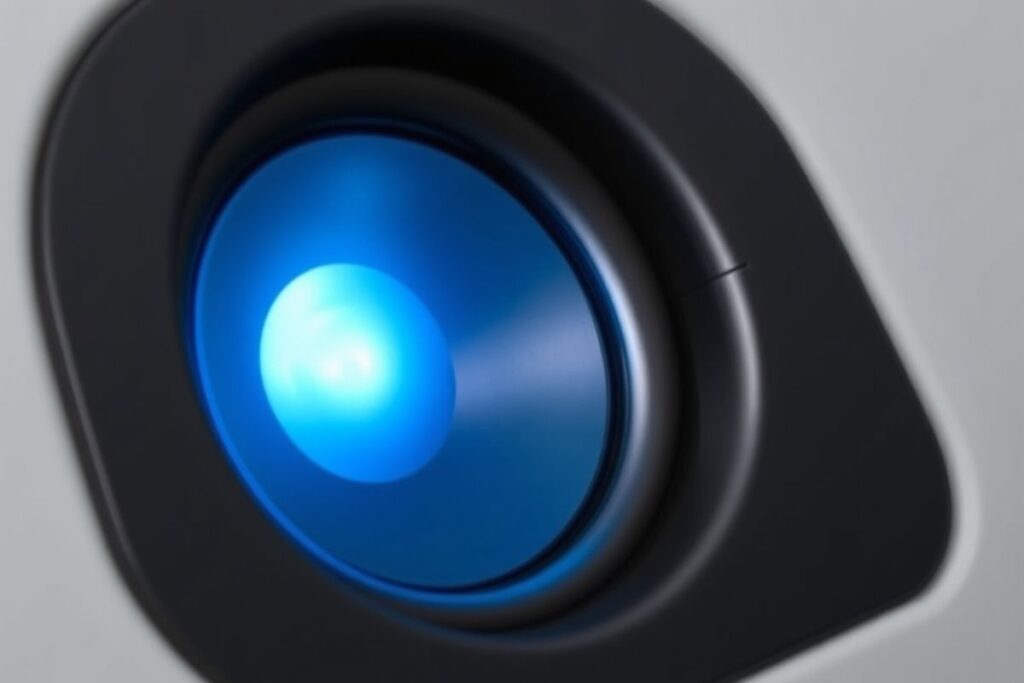The allure of sleek, minimalist design often comes with a compromise, and nowhere is this more apparent than with built-in TV speakers. While they save space and reduce clutter, they frequently sacrifice sound quality, particularly when it comes to dialogue clarity. This muffled dialogue phenomenon is a common frustration for viewers who find themselves constantly adjusting the volume, straining to hear conversations over the soundtrack, or resorting to subtitles. The pursuit of a streamlined aesthetic shouldn’t mean sacrificing the core function of a television: to deliver clear, understandable audio. This issue highlights the growing disconnect between form and function in modern technology, prompting us to question whether space-saving sound is truly worth the cost of compromised audio fidelity.
The Problem with Space-Saving Sound
Thin TVs, Thinner Sound

The slim profile of modern televisions leaves little room for robust speakers. Traditional speaker designs require depth and volume to produce rich, full-bodied sound. The limited space within these sleek sets necessitates smaller, less powerful speakers, resulting in compromised audio quality. These smaller speakers struggle to reproduce the full range of frequencies, leading to a tinny, unbalanced sound that often lacks bass and clarity.
Furthermore, the placement of these speakers, often firing downwards or towards the rear of the TV, contributes to the problem. This indirect sound projection leads to audio reflecting off walls and furniture, creating a diffuse and unclear soundscape. This is particularly detrimental to dialogue, which becomes muddled and difficult to discern.
The pursuit of thin televisions has inadvertently prioritized aesthetics over acoustics. While visually appealing, these slim designs inherently limit the potential for high-quality audio, leaving viewers to contend with a less than satisfactory listening experience.
The Dialogue Dilemma
The most common complaint about space-saving sound is muffled dialogue. While sound effects and music may be adequately rendered, the subtle nuances of human speech are often lost. This is because dialogue typically resides in the mid-range frequencies, which are often the first to suffer in compromised speaker systems. The limited dynamic range of these speakers further exacerbates the issue, making it difficult to distinguish between whispers and shouts.
This issue forces viewers to constantly adjust the volume, cranking it up to hear dialogue only to be blasted by overly loud sound effects moments later. This constant volume fluctuation disrupts the viewing experience and can be particularly jarring during late-night viewing sessions.
The inability to clearly hear dialogue diminishes the emotional impact of movies and television shows. The subtle inflections and nuances of speech are crucial for conveying meaning and emotion, and their loss significantly detracts from the overall viewing experience.
Solutions for Improving Audio
External Speaker Options
One of the most effective solutions for improving TV audio is to invest in external speakers. Soundbars offer a compact and relatively affordable upgrade, providing significantly better sound quality than built-in TV speakers. They offer a wider soundstage and clearer dialogue reproduction, dramatically enhancing the viewing experience.
For a more immersive audio experience, a dedicated surround sound system is the ideal solution. With multiple speakers strategically placed around the room, a surround sound system creates a truly cinematic audio environment. This allows viewers to fully appreciate the subtleties of sound design, from the quietest whispers to the most explosive action sequences.
Choosing the right external speaker system depends on budget, room size, and personal preferences. However, any external speaker option will provide a substantial improvement over the limited capabilities of built-in TV speakers.
Headphones for Private Listening
Headphones provide a simple and effective solution for improving dialogue clarity without disturbing others. High-quality headphones can deliver a rich and detailed audio experience, allowing viewers to fully appreciate the nuances of sound design. They also offer a more private listening experience, ideal for late-night viewing or shared living spaces.
From noise-canceling headphones to wireless earbuds, a wide variety of options are available to suit individual needs and preferences. Choosing the right headphones can significantly enhance the enjoyment of movies and television shows, particularly when dealing with space-saving sound limitations.
Using headphones allows for a more immersive and personal listening experience, free from the distractions of ambient noise and the limitations of built-in TV speakers.
Comparing Audio Solutions
| Solution | Cost | Space Requirements | Sound Quality |
|---|---|---|---|
| Built-in Speakers | Included | Minimal | Poor |
| Soundbar | Moderate | Small | Good |
| Surround Sound System | High | Moderate | Excellent |
| Headphones | Varies | Minimal | Good to Excellent |
- Soundbars are a cost-effective upgrade for most viewers.
- Surround sound systems offer the best immersive experience.
- Headphones provide a private and personalized listening solution.
Ultimately, the best solution depends on individual needs and preferences. However, acknowledging the limitations of space-saving sound is the first step towards achieving a truly satisfying audio experience.

Leave a Reply